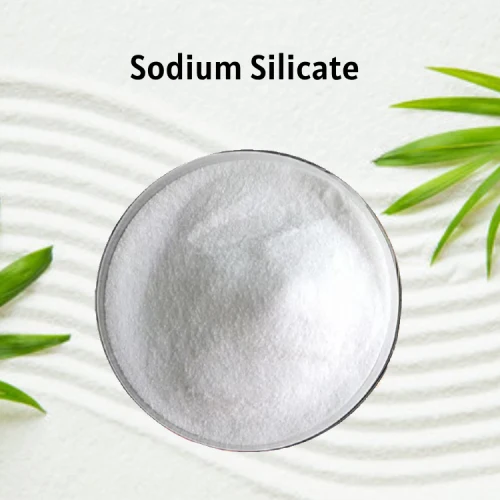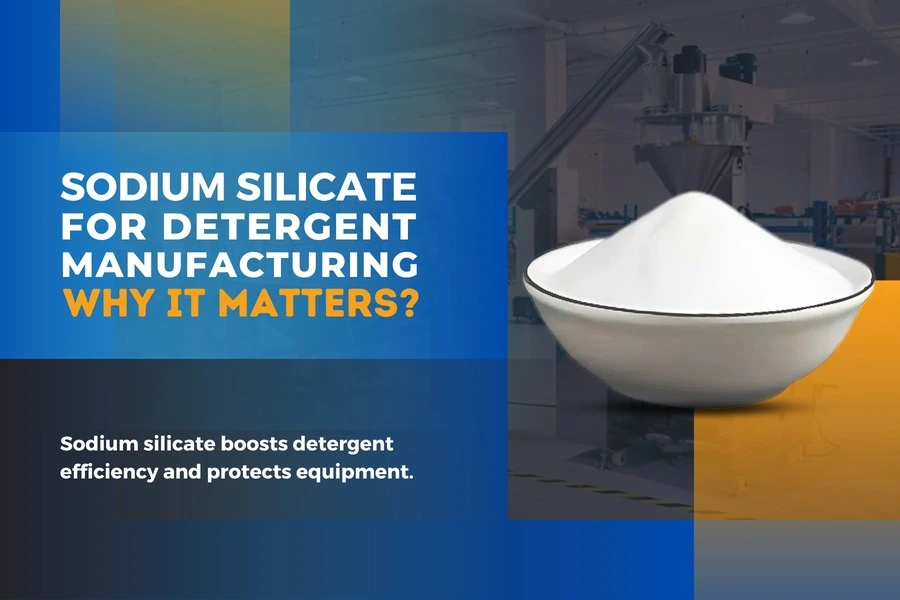Did you know sodium silicate is a highly versatile compound and plays a vital role in all industries, mainly in the manufacture of cleaning products? This key substance is an important component in the formulation of various detergents, such as dishwashing liquids, laundry detergents, and industrial cleaning agents.
Table of Contents
Sodium silicate production uses a technology combining silica sand with sodium carbonate at elevated temperatures, thus forming a glassy solid that, on arriving in contact with water, dissolves generating an alkaline solution.
That alkaline nature is suitable to enhance the performance of the surfactants used in cleaning formulations, which help emulsify oils with ease and make it easier for grease and dirt removal.
Its Sodium Silicate for Detergent is just impossible to underrate. In addition to emulsifying oils and fats, it helps stabilize the cleaning formulas against separation- a factor contributing immensely to their shelf life.
This article will outline the sodium silicate manufacturing process, discuss its abundant uses in detergents, and thus its influence on the industry of cleaning products, explaining why sodium silicate is a key ingredient in any effective-cleaning agent.
The Role of Sodium Silicate for Detergent Formulation
By virtue of its surfactant properties, sodium silicate has always been the most pertinent additive in the preparation of detergents. When it comes to builders, it helps soften water and lend support.
Sodium silicate greatly supports the stability of the detergent composition by being able to prevent soil redeposition upon surfaces or fabrics. Such a compound is useful in the cause of heavy-duty cleaners, as it creates an emulsion of oils and greases.
Another aspect of sodium silicate is its ability to impede corrosion, thereby providing a safeguard to metallic surfaces from damage when such surfaces come into contact with strong chemicals.
Its alkaline property makes it very useful in destroying organic molecules, rendering it appropriate for use in industrial cleaners and laundry detergents. Altogether, sodium silicate has multiple actions from functional perspectives in making detergents stable and easily cleaned.
The Production Process of Sodium Silicate
Sodium silicate is prepared by the high-temperature fusion of silica sand with sodium carbonate, commonly known as soda ash. The mixture reacted with each other forms the sodium silicate liquid, but the grade produced is highly dependent on the ratio of the silica and sodium oxide during the reaction.
For the production process to yield sodium silicate of the desired quality and specification, it requires strict control of temperature, pressure, and reaction time.
Sodium silicate solution is further concentrated and stabilized by the cooling, filtering, and modification of the pH following the initial fusion process. Depending on the ultimate application, the product may be liquid, solid, or powdered.
The manufacture of sodium silicate is a complex chemical process that requires skill and stringent quality control procedures to ensure uniformity and purity.
The Impact of Sodium Silicate on Cleaning Performance
This significantly enhances the cleaning ability of detergent, which helps in stain removal and resettling of dirt. A chelating agent, sodium silicate interacts with metal ions in water which would otherwise impede the cleaning process.
This will help the detergent maintain its effectiveness in hard water, where mineral deposits make cleaning more difficult.
It also helps dissolve the detergent into water to carry more stain and dirt deposits. Sodium silicate, owing to its alkaline properties, is a highly valued ingredient in many dish-washing solutions and laundry detergents; it removes oily residue and protein-based stains.
Cleaning products would greatly benefit from sodium silicate inclusion by way of improved dirt suspension/emulsification and general cleaning power to eradicate deep and long-lasting stains with the added benefits of cleanup of mucilages.
The Sustainability of Sodium Silicate Production
Detergent production is one of the fields providing sodium silicate with sustainability benefits. The present-day atmosphere craves a much cleaner product that is less burdensome on the natural world.
The manufacture of sodium silicate requires an otherwise plentiful and ongoingly accessible supply of soda ash and silica sand. The energy conservation production process produces low levels of waste and environmental disturbance.
Sodium silicate is thus an environmentally friendly and non-toxic component, posing no hazards to aquatic organisms and their environments when used properly. This has served as an incentive to manufacturers with a mind for providing environmentally friendly products.
Overall, the sustainable production of sodium silicate goes a long way in providing consumers with environmentally friendly and efficient cleaning products.

The Future of Sodium Silicate in Detergent Manufacturing
This demand for sodium silicate for detergent manufacturing sector will be relying heavily on sodium silicate in a variety of ways in the coming years. The detergent industry has a greater demand for cleaning products with enhanced cleaning efficiency while limiting any potential adverse environmental impact.
Sodium silicate is an attractive additive for formulating modern cleaning because it incorporates an exclusive blend of performance qualities, stability, and sustainability.
Further innovations in the detergent production industry will most likely be driven by advances in formulation methods and sodium silicate manufacturing technologies.
New uses for sodium silicate in specialized detergents, from industrial cleaners to fabric softeners and stain removers, will soon become available.
Continued research and development of sodium silicate-based cleaning products will shape the future of detergent production and help meet evolving customer demands with respect to effective, safe, and environmentally friendly cleaning products.
In conclusion, sodium silicate for detergent manufacturing is a basic constituent, and it provides the means to promote cleaning efficiency, stability, and sustainability.
By virtue of its unique properties, it is an indispensable constituent of many cleaning products, from industrial cleaning agents to household detergents.
The increased consumer demand for green cleaning products will drive the relevance of sodium silicate in the production of detergents toward sustainability and innovation.
FAQs
What is sodium silicate used for in detergent?
It boosts cleaning power, stabilizes the formula, and prevents corrosion.
How do you use sodium silicate in soap?
It’s mixed with other ingredients to enhance cleaning and maintain consistency.
How much sodium silicate mL is used for making 10 L of soap?
Typically, around 50-100 mL is used, but it depends on the formula.
What is the percentage of sodium silicate in detergent powder?
It’s usually 5-15%, varying by the detergent type.
What is the use of sodium silicate in detergent?
It softens water, breaks down grease, and keeps dirt from re-sticking.
Sandip Agrawal, Polymer Engineer and MD of Sakshi Chem Sciences Pvt. Ltd., leads innovation in construction chemicals, shuttering oils, and industrial lubricants. With expertise in polymer science and eco-friendly solutions, he drives R&D and sustainable advancements, ensuring high-performance products for India and global markets.


